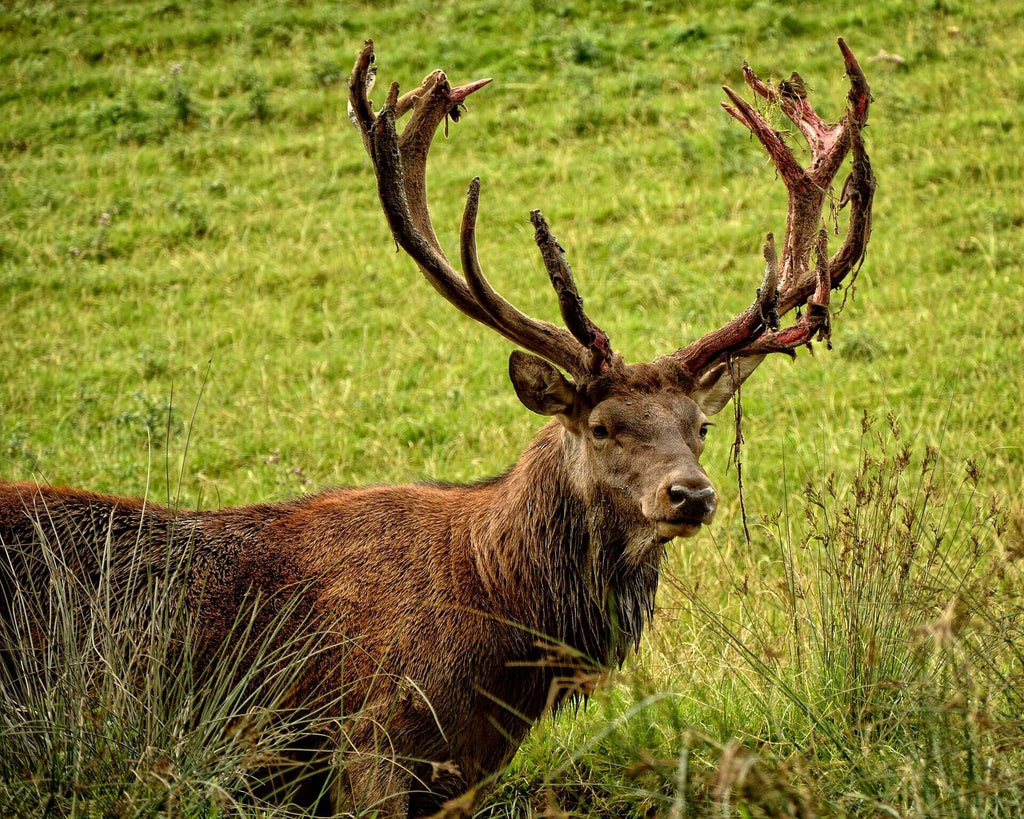Antler development in red deer – a miracle of nature

Red deer have an enormously strong charisma. Not only do these fascinating animals attract attention and attract admiring glances due to their size and weight alone - it is also the antlers in particular that make many people's jaws drop because Mother Nature's work is so incredibly beautiful. The development of the antlers in red deer can definitely be described as a kind of miracle. If you take a closer look at the different phases and let this information sink in, you will understand what special things nature is capable of. WOLFGANGS has looked at this development in detail and compiled the most important facts for you.
The regenerative antler structure of the red deer
Prehistoric hunters were already like modern humans, as they had a great enthusiasm for the antlers of red deer. Around 32,000 years ago, this keen interest could often be observed in caves, where paintings of huge bone structures adorned the walls. The rapid growth of antlers and the demonstration of strength that this showed caused enormous admiration among people.
It can be said that this admiration has not changed to this day. The regenerative antler structure of the red deer is still the focus of attention, but now for other reasons. Medicine in particular is looking at this with interest. How can it be that antlered game is able to regenerate its antler structures year after year, while other organs cannot?
The answer to this question could reveal important medical conclusions, so that intensifying research work in this area could be extremely worthwhile. The secondary sexual characteristic of the hoofed game, which is considered an organ, is the only organ in the animal that is able to regenerate completely. In view of the daily growth in length, which is certainly capable of more than 2 cm, the title of " fastest growing organ in the animal kingdom " has clearly been given to the right candidate. It is facts like these that give the term " miracle of nature " a justification for its existence.

How does antler development occur in red deer?
The beautiful, bony skull projections of the red deer form every year and grow out of the so-called rose bushes. Depending on the season, there is an increased concentration of the sex hormone in the animal's blood. This influence promotes the formation and allows the attractive antlers to sprout. In percentage terms, it can even be said that the antlers make up an average of around 21 percent of the total skeletal mass . In some abnormal cases, this value can even rise to 42 percent.
The length of daylight plays a key role in antler growth, as the hormonal cycle is closely aligned with it. The term " shortday breeder " hits the nail on the head, as a rise in sex hormones is only observed after the summer solstice. The process is therefore only set in motion when the days of light become shorter again. After the rut, however, the rudder is steered in the other direction. The antlers are shed and regeneration begins as soon as the days of light become longer again. The testosterone level also drops again. As already mentioned above, the spectacle starts all over again right after the summer solstice and the circle is complete.
When does the first antler development occur?
The beginnings of the rose bush can be seen on the skull area of the red deer as early as the embryo stage. However, these beginnings are not enough to start antler growth before the animal's actual lifespan. As with humans, puberty is a time when the body of red deer changes. When they reach a certain body weight, testosterone production is boosted, which in turn ensures that the first antler-like structures develop.
The “ spikes ”, which are still extremely small in size, cannot yet be called “ antlers ”, but this first result already shows that the antler growth will take place annually from now on and will take on ever more generous features over time.
What role does nutritional status play in development?
The development of the antlers in red deer is influenced by the mother of the newly born fawn. The mother's milk is particularly important here. If the composition is of high quality and the amount of milk is sufficient, it can be said that these two factors contribute to healthy physical development in the first few months of life. This in turn also promotes the development of the first antlers later in life.
Often, you can tell from the antlers of a young deer how it developed and whether there were any deficits during this time. It is a perfect indicator to roughly interpret the young deer's disposition. For example, if the mother is not of a particularly high rank and is already of advanced age, this is often noticeable in the development of the calf.
The gestation period also has a huge influence. If the mother's general health is average to poor, then this can also have an effect on the young stag. The probability of one day becoming a large stag drops noticeably under such conditions.






